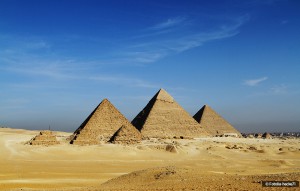A heritage to be preserved for peace

Further to the widespread destruction perpetrated during World War I, the idea of safeguarding certain sites and monuments worldwide emerged in the first half of the 20th century. It was not until 1959 however that the international community started moving to protect heritage. This was the year the Nubia Campaign was launched in Egypt to move Nubian Monuments, including the Great Temples of Abu Simbel and Philae, to prevent them from being swamped by the Aswan dam. As with other large-scale operations to protect other heritage sites such as Venice in Italy (further to flooding in 1966) and the run-down Borobudur temple in Indonesia, this action was instigated and led by UNESCO.
The United Nations Education Scientific and Cultural Organisation (UNESCO) considered the safeguarding of these sites under threat as one of its prerogatives. As an agency of the United Nations Organisation (UNO), set up in the aftermath of World War II to prevent war breaking out again, it held that safeguarding shared heritage could help to achieve union among nations. In November 1972, UNESCO member states set up a Convention to protect World Heritage. This shaped the notion of « World Heritage », a heritage that knows no national borders and belongs to all of humankind.
Aim of the Convention To bring the international community together in order to protect « parts of the cultural or natural heritage of outstanding interest ». A World Heritage Committee was founded in 1976 to determine which sites were to be included on the list (or sometimes, to be struck off). Two years later, the cathedral in Aachen (Germany), Gorée Island (Senegal) and the Galápagos Islands (Ecuador) inaugurated the World Heritage list. The first French sites were listed in 1979: Saint-Michael’s Mount, the château de Versailles and its grounds and Chartres cathedral.


Universal and outstanding

There are over a thousand sites on the List today, and all have been included for their outstanding universal value, namely remarkable, symbolic heritage value recognised by all, transcending culture, language, religion and country. These sites shared by all the peoples of the world must be preserved for future generations. There are several possible reasons for qualifying sites as outstanding. It can for example, represent a masterpiece of human creative genius, feature outstanding monumental art and architecture, or enjoy significant historical importance.
The universal, outstanding value of sites is assessed according to ten criteria. These are detailed in the « Operational Guidelines for the Implementation of the World Heritage Convention » which is the main reference document for inscriptions on the World Heritage List. Sites hoping to be listed must fulfil at least one of these criteria. Given the increased numbers of requests for inscription sent to the World Heritage Centre in the past 40 years, the number of sites nominated is now limited to 45 a year. States Parties to the Convention may only file two nominations a year at most.


